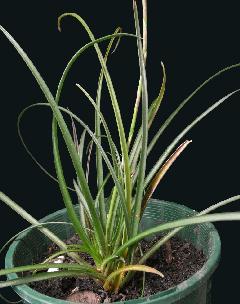
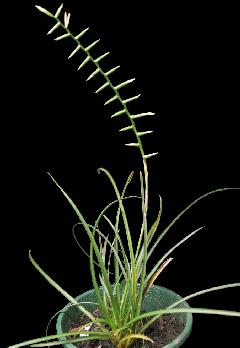
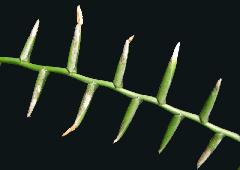

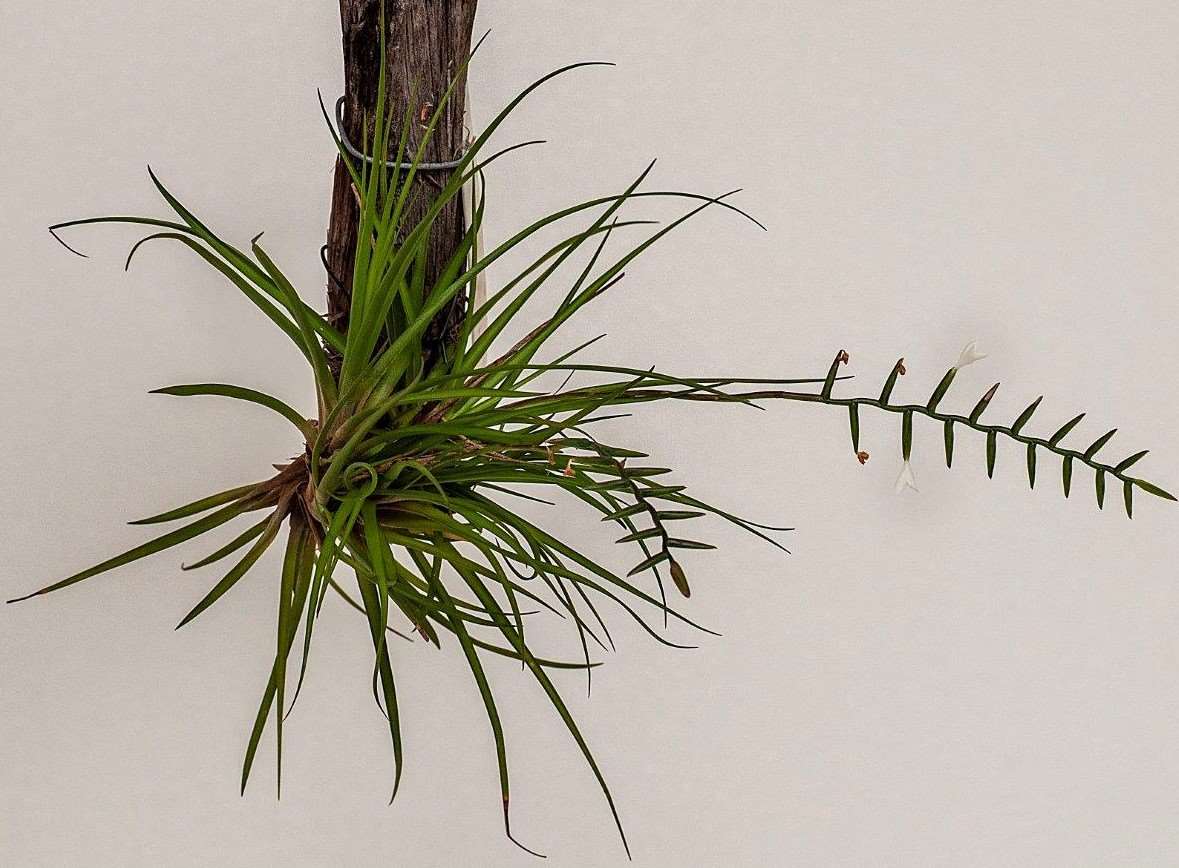
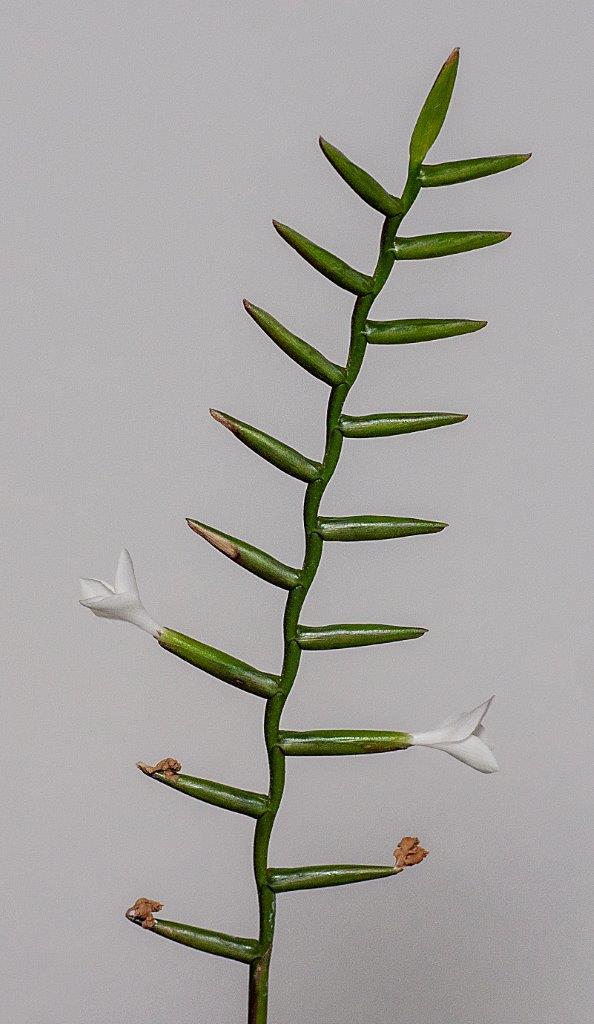

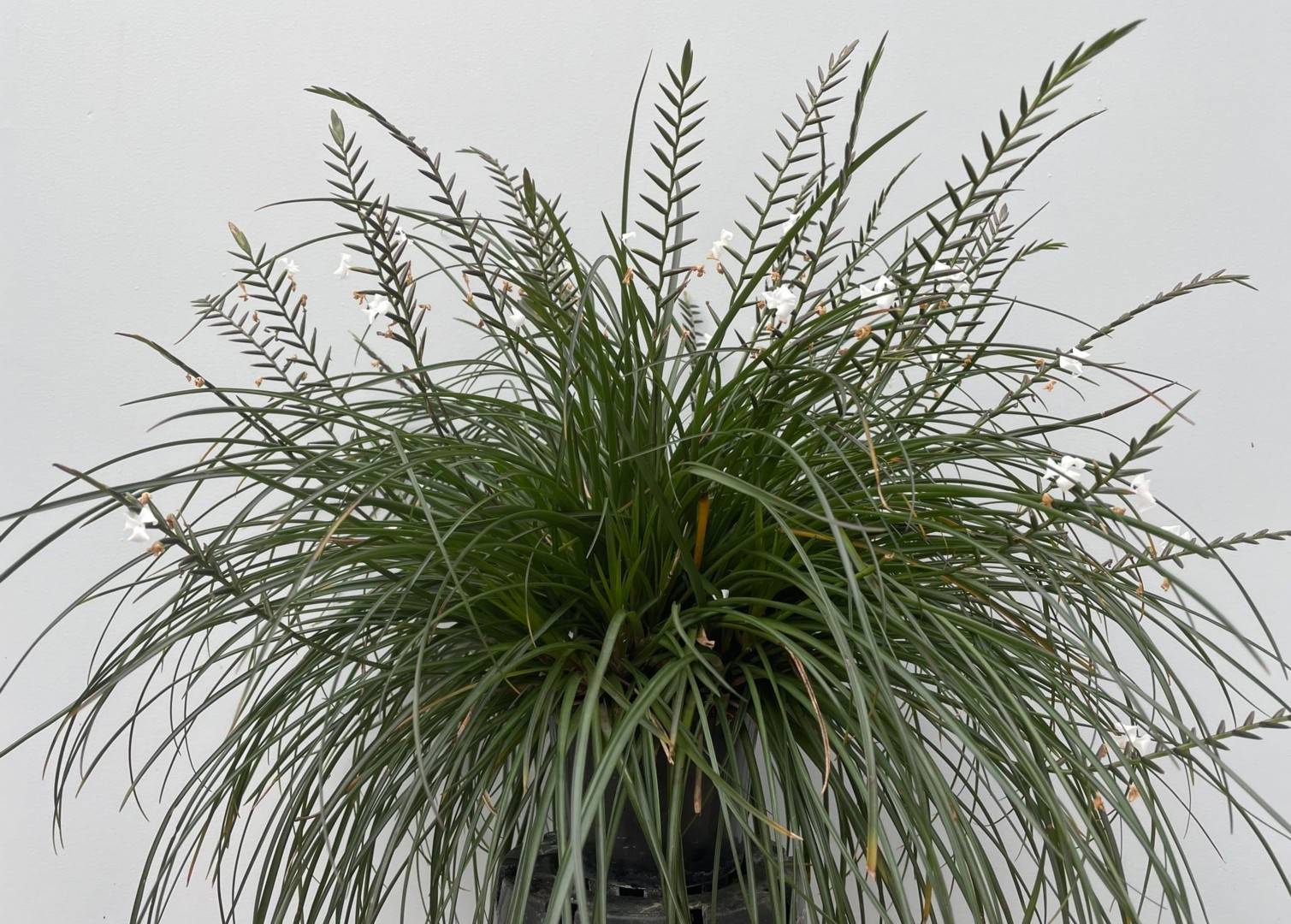

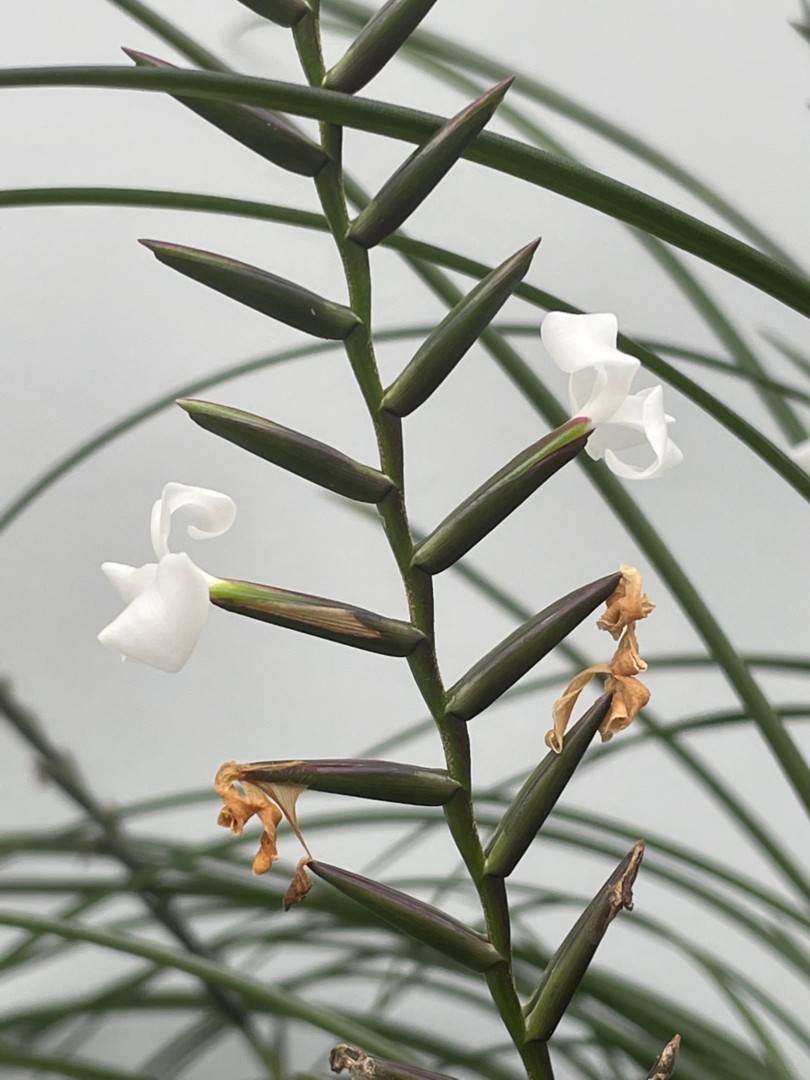

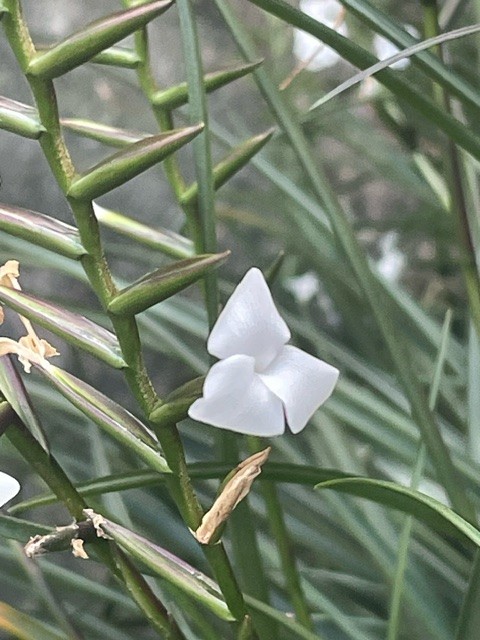
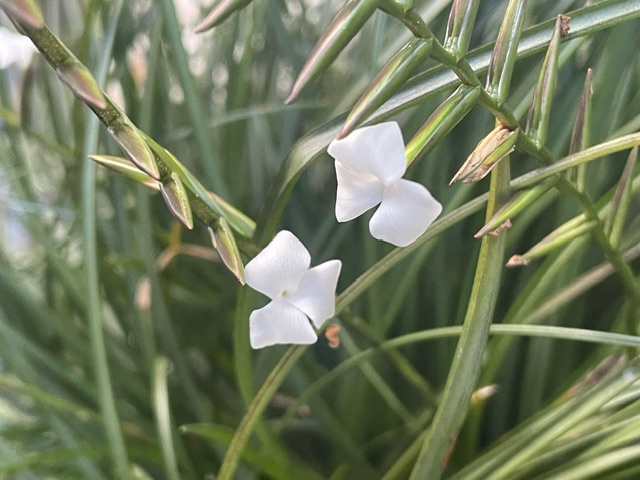

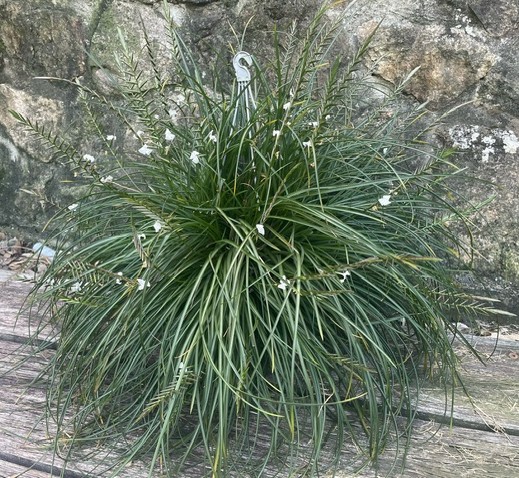
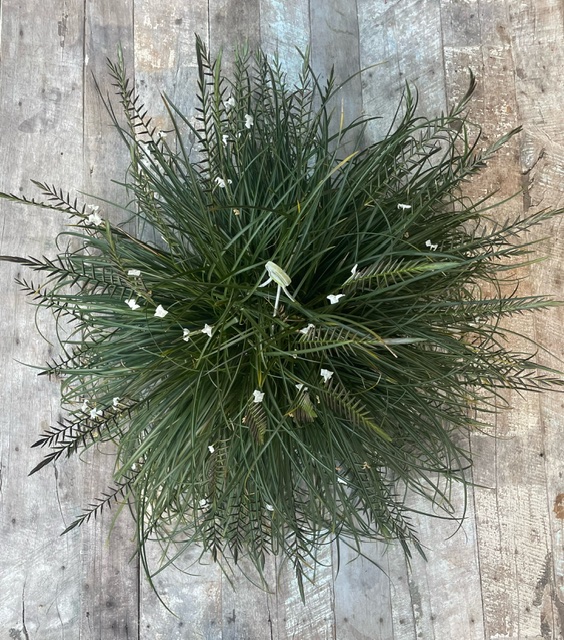
Tillandsia narthecioides Presl, Rel. Haenk. 1: 125. 1827.
Desc from S&D p854
Plant stemless or very short-caulescent, flowering about 45 cm high.
Leaves 20-30 in a dense rosette, all or nearly all erect, 2-4 dm long;
Sheaths elongate, scarcely distinct, covered with a ferruginous membrane of appressed scales;
Blades long-attenuate, 5 mm wide or less, sparsely and minutely lepidote beneath, subchartaceous when dry.
Scape erect, much shorter than the leaves, very slender;
Scape-bracts tubular-involute, erect, the lower imbricate, the upper elliptic, obtuse, 15 mm long, equaling the internodes, purple.
Inflorescence simple, lax, linear, 12 cm long, 25 mm wide, to 30-flowered;
Rhachis completely exposed, glabrous, regularly undulate especially toward apex, not at all thickened at the bases of the flowers, internodes ca 6 mm long.
Floral bracts spreading, linear-elliptic, obtuse, ca 13 mm long, 3.5-4 mm wide, equaling the sepals, scarcely carinate, glabrous outside, strongly nerved, chartaceous;
Flowers sessile.
Sepals equally subfree, elliptic, obtuse, 7-14 mm long, coriaceous, glabrous, strongly nerved, the posterior carinate;
Petals white, the blades spreading, 6 mm long;
Stamens deeply included, exceeding the pistil, filaments high-connate.
Capsule slenderly cylindric, acute, to 36 mm lortg.
Type. Haenke s n (holotype PR, photo US), Guayaquil, Ecuador, 1790-91.
DISTRIBUTION. Epiphytic in forest, 20-960m alt, southeastern Ecuador.
ECUADOR. GUAVAS: Near Guayaquil, Sodiro 171/41 (B, B photo 1249/9); Balao, Jan !892, Eggers 14277 (B, US); Bucay, 5-7 Jul 923, Hitchcock 20407 (US); 8-15 Jun !945, Camp E-3676 (NY, US); Las Americas, Balzar to Quevedo, 28-29 Sep 1952, Fagerlind & Wibom 391 (S); Pa!me to Dau!e, 30 Sep 1952, Fagerlind & Wibom 412 (S); Ducur, Guayaquil-Cuenca road, 1956, Teuscher 2110-56 (US); Man¬glaralto, 2 May 1962, Gilmartin 700 (US). LOS RIOS: Hacienda Clementina on Rio Pita, 26 Mar 1939, Asplund 5491 (S, US); 30 Mar 1953, Fagerlind & Wibom 2644 (S, US).
Tillandsia narthecioides Presl, Rel. Haenk. 1: 125. 1827.
T. foliis glabris linearibus planis apice subulatis, basi dilatatis, spica racemosa simplicissima, floribus distichis patentibus, bracteis glabris calycis longitudine, capsula lincari elongata.
Hab. in Guayaquil. Perennial.
Radices longae filiformes teretes ramulosae copiosae. Caulis semipedalis erectus simplicissimus basi creberrime foliosus, in reliqua sua altitudine vaginis alternis oblongis acutis striatis subimbricatis obtectus. Folia 8 pollices longa erecta glabra linearia plana, apice subulata canaliculata, basi dilatata 3 lineas lata. Spica 4 pollices longa erecta simplicissima, rhachi flexuosa compressa, Flores distichi distantes fere horizontaliter patentes. Bracteae 4 lineas longae oblongae obtusae striatae glabrae. Calyx glaber longitudine bracteae, laciniis oblongis obtusis. Capsula 15 lineas longa linearis trigona mucronata, valvis externe rugoso-venosis, interne fuscis nitidulis, dein recurvatis subtortis. Semina lineari-oblonga fusca. Pappus elongatus semine multoties longior.